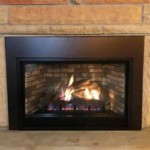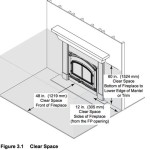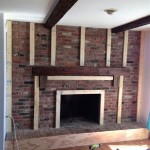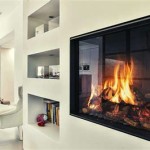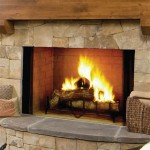Understanding Wood Stove Fireplace Pipe: A Comprehensive Guide
Wood stoves offer an efficient and aesthetically pleasing method of heating residential and commercial spaces. A crucial component of any wood stove installation is the fireplace pipe, also referred to as stovepipe or flue pipe. This pipe serves as the critical conduit for safely expelling smoke, gases, and byproducts of combustion from the stove into the atmosphere. Proper selection, installation, and maintenance of the wood stove fireplace pipe are paramount for ensuring both the efficiency and safety of the heating system.
The function of the fireplace pipe extends beyond simply venting exhaust. It also plays a vital role in creating and maintaining the draft, which is the upward airflow that draws air into the stove for combustion and carries the resulting gases out of the pipe. An inadequate or poorly designed pipe system can lead to insufficient draft, resulting in smoky fires, inefficient burning, and potential hazards such as carbon monoxide buildup. This article will explore the various aspects of wood stove fireplace pipes, encompassing materials, installation requirements, safety considerations, and maintenance practices.
Key Point 1: Types of Wood Stove Fireplace Pipe
The selection of the appropriate wood stove fireplace pipe depends on several factors, including the type of stove, the intended installation location (interior or exterior), and local building codes. Several types of pipe are available, each with its unique characteristics and applications.
Single-Wall Stovepipe: This is the most basic and least expensive type of pipe. It is primarily used for connecting the wood stove to the chimney thimble (the point where the stovepipe enters the chimney). Single-wall stovepipe radiates significant heat into the surrounding room, which can be beneficial in some scenarios. However, it is essential to maintain adequate clearance from combustible materials, as the surface temperature of single-wall stovepipe can reach high levels during operation. Building codes typically specify minimum clearance distances, often 18 inches or more, to prevent fire hazards. Single-wall stovepipe is generally not approved for passing through walls or ceilings.
Double-Wall Stovepipe: Double-wall stovepipe offers improved safety compared to single-wall pipe. It consists of two layers of metal with an air space or insulation in between. This design reduces the surface temperature of the pipe, allowing for reduced clearances to combustible materials, typically down to 6 inches. Double-wall stovepipe is often constructed with a locking mechanism to ensure a secure connection between sections. While more expensive than single-wall pipe, its increased safety and reduced clearance requirements make it a popular choice for many installations.
Insulated Chimney Pipe (Class A Chimney): This type of pipe is specifically designed for passing through walls and ceilings and for exterior chimney applications. It features multiple layers of insulation surrounding the inner flue, providing superior thermal performance and reducing the risk of fire hazards. Class A chimney pipe is typically constructed of stainless steel and is tested and listed to UL 103 standard, demonstrating its ability to withstand high temperatures and resist corrosion. It is considerably more expensive than single-wall or double-wall stovepipe, but its safety features are essential for through-the-wall or through-the-roof installations.
Materials: Regardless of the type, wood stove fireplace pipes are commonly made of steel or stainless steel. Steel stovepipe is less expensive but more prone to rust and corrosion, especially when exposed to moisture. Stainless steel stovepipe offers superior durability and resistance to corrosion, making it a longer-lasting investment. The gauge (thickness) of the steel also influences the pipe's durability and heat retention capabilities. Thicker gauges generally offer improved performance and longevity.
Key Point 2: Installation Requirements and Best Practices
Proper installation of wood stove fireplace pipe is crucial for ensuring the safe and efficient operation of the wood stove. Adhering to manufacturer's instructions and local building codes is paramount. Incorrect installation can lead to fire hazards, carbon monoxide poisoning, and inefficient heating. Generally, professional installation is recommended for complex installations with wall or ceiling penetrations.
Clearances to Combustibles: As mentioned previously, maintaining adequate clearance from combustible materials is essential. Building codes typically specify minimum clearance distances for different types of stovepipe. These distances are designed to prevent the ignition of nearby walls, ceilings, and other flammable materials. Using heat shields or non-combustible materials can further reduce clearance requirements in some cases. It is important to consult local building codes and the stove and pipe manufacturer's instructions for specific clearance requirements.
Proper Pipe Slope and Connections: The stovepipe should ideally have a consistent upward slope towards the chimney. This promotes a better draft and helps prevent creosote buildup. A recommended slope is typically ¼ inch per foot. All pipe sections should be securely connected using appropriate fasteners, such as screws or clamps. Joints should be airtight to prevent smoke and gas leakage into the living space. When connecting single wall pipe, be sure that the crimped end (male end) points down towards the stove to prevent creosote from leaking out of the connections.
Chimney Connection: The stovepipe must connect properly to the chimney thimble. The thimble should be the correct size for the stovepipe, and the connection should be airtight. It is crucial to ensure that the chimney is in good condition and free from obstructions. A chimney inspection by a qualified professional is recommended before connecting a wood stove. Furthermore, the stovepipe should never extend into the chimney flue as this can disrupt the draft. The stovepipe should be flush with the interior of the chimney liner.
Through-the-Wall and Through-the-Roof Installations: These types of installations require special attention and the use of Class A chimney pipe. A firestop thimble must be installed where the pipe passes through a wall or ceiling to provide a fire-resistant barrier. The chimney pipe must extend a sufficient distance above the roofline to ensure proper draft and prevent down drafts. Local building codes typically specify the required height above the roof. These installations should be performed by a qualified professional to ensure compliance with all applicable codes and safety standards.
Key Point 3: Maintenance and Safety Considerations
Regular maintenance and adherence to safety practices are essential for the long-term safe and efficient operation of a wood stove and its fireplace pipe. Neglecting maintenance can increase the risk of fire hazards and health problems.
Creosote Buildup: Creosote is a tar-like substance that is formed when wood burns incompletely. It condenses inside the stovepipe and chimney, and if it builds up sufficiently, it can ignite, causing a dangerous chimney fire. Regular inspections and cleaning of the stovepipe and chimney are crucial for preventing creosote buildup. The frequency of cleaning depends on several factors, including the type of wood burned, the burning habits, and the design of the stove and pipe system. As a general guideline, an inspection should be performed at least once a year, and cleaning should be done as needed.
Inspections: Regular inspections of the stovepipe and chimney can identify potential problems before they become serious. Look for signs of rust, corrosion, cracks, or loose connections. Check for creosote buildup by tapping on the pipe; a hollow sound indicates minimal buildup, while a dull thud suggests a significant accumulation. Inspect the chimney for any signs of damage or deterioration.
Cleaning: Cleaning the stovepipe and chimney can be done by a professional chimney sweep or by the homeowner. If cleaning yourself, be sure to use appropriate equipment, such as a chimney brush and a vacuum designed for ash and soot. Disconnect the stovepipe and clean it thoroughly, removing all creosote and debris. Clean the chimney using a chimney brush that is the correct size and shape for the flue. Dispose of the collected creosote and ash properly.
Carbon Monoxide Detectors: Carbon monoxide (CO) is a colorless, odorless, and poisonous gas that can be produced by wood stoves. Installing carbon monoxide detectors in the home is essential for protecting against CO poisoning. The detectors should be placed near sleeping areas and tested regularly. Ensure the batteries are fresh and replaced as needed. Any indication of CO warrants immediate evacuation and investigation.
Burning Practices: The type of wood burned significantly impacts the amount of creosote produced. Seasoned (dry) hardwood burns cleaner than green or softwood. Avoid burning treated wood, painted wood, or other materials that can release harmful chemicals. Maintaining a hot fire also helps to reduce creosote buildup. Ensure that the stove receives an adequate supply of air for combustion. Overloading the stove with wood can lead to incomplete burning and increased creosote production.
Professional Services: Consulting with a qualified professional for installation, inspection, and maintenance is highly recommended. A certified wood stove installer or chimney sweep can ensure that the stove and pipe system are installed correctly and maintained safely. They can also provide valuable advice on burning practices and safety precautions.
Pipe Replacement: Over time, wood stove fireplace pipes can deteriorate and require replacement. Look for signs of rust, corrosion, cracks, or warping. If the pipe is damaged or worn, it should be replaced promptly to prevent fire hazards and ensure efficient operation.

Wood Stove Chimney Installation Diagrams Woodstove

Wood Stove Chimney Articles Woodstove

Friendly Fires Wood Stove 6 Chimney Kit Up Out

Wood Stove Chimney Installation Diagrams Woodstove

Through The Wall Chimney Pipe Installation Wood Stove Fireplace Burning

Stainless Steel Class A Pipe 6

Temp Guard Exterior Wood Stove Chimney Burning

Chimney And Venting Pipe Guide Fireplaces Direct Learning Center

Friendly Fires Wood Stove 6 Chimney Kit Flat Ceiling

Chimney Installation Cookstove Community

